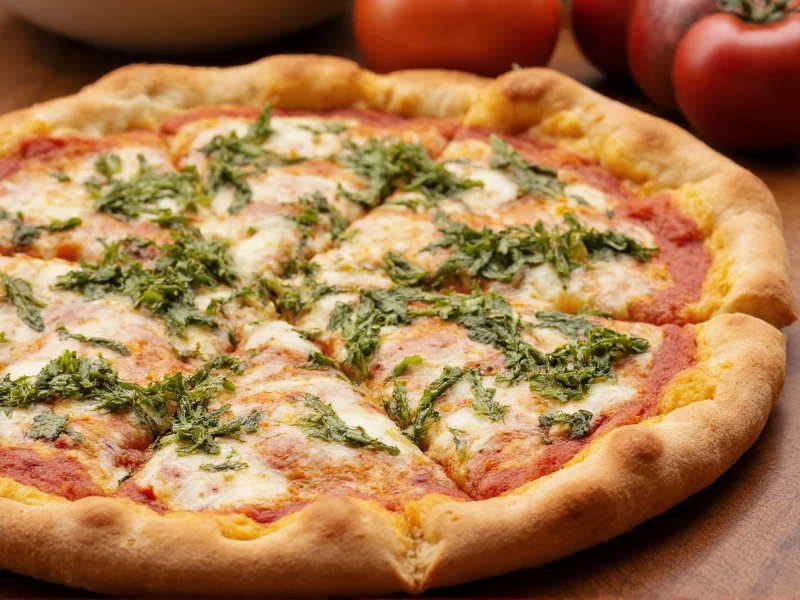When crafting the perfect pizza, the timing and technique of herb application make all the difference. Fresh oregano offers a vibrant, complex flavor profile that dried versions simply can't match, but improper use can ruin your culinary creation. This comprehensive guide reveals professional techniques for incorporating fresh oregano into your pizza-making process, backed by culinary science and chef-tested methods.
The Flavor Science Behind Fresh Oregano
Fresh oregano contains volatile essential oils like carvacrol and thymol that deliver its distinctive aromatic punch. These compounds begin degrading at temperatures above 250°F (121°C)—well below standard pizza baking temperatures of 450-900°F. When exposed to high heat, fresh oregano loses up to 80% of its aromatic compounds within minutes, resulting in muted flavor and potential bitterness.
| Herb Form | Flavor Intensity | Heat Tolerance | Best Application Time |
|---|---|---|---|
| Fresh oregano leaves | High (bright, complex) | Low (degrades above 250°F) | Immediately after baking |
| Dried oregano | Moderate (earthy, concentrated) | High (withstands baking) | Before baking (in sauce or sprinkled) |
| Oregano-infused oil | Medium (smooth, integrated) | Medium (varies by oil) | After baking or in dough |
Precision Application Techniques for Fresh Oregano Pizza
Professional pizzaiolos follow specific protocols when using fresh oregano to maximize flavor impact. The critical factor is understanding that fresh oregano's delicate compounds require protection from intense oven heat. For authentic Neapolitan-style pizza baked at 800°F+, fresh oregano must be added after baking. In lower-temperature home ovens (450-500°F), you can experiment with partial pre-baking application, but never exceed 2 minutes under heat.
Step-by-Step Fresh Oregano Application
- Prepare properly: Gently rinse fresh oregano and pat completely dry with paper towels. Excess moisture creates steam that damages pizza texture.
- Measure accurately: Use 3:1 fresh-to-dried ratio (3 teaspoons fresh = 1 teaspoon dried). For a standard 12-inch pizza, 1-2 tablespoons of fresh oregano provides optimal flavor without overwhelming.
- Time perfectly: Remove pizza from oven when cheese is fully melted but before browning occurs (about 1-2 minutes before completion).
- Apply strategically: Scatter oregano evenly over hot pizza, allowing residual heat to release essential oils without burning.
- Rest briefly: Let pizza sit 60-90 seconds before serving to allow flavors to integrate.
Perfect Pizza Pairings for Fresh Oregano
Not all pizza styles benefit equally from fresh oregano. Understanding flavor compatibility ensures optimal results when making fresh oregano pizza. Traditional Margherita pizza represents the ideal canvas, where fresh oregano complements but doesn't compete with simple ingredients. The herb's citrusy notes enhance tomato acidity while balancing mozzarella's richness.
For white pizza variations, fresh oregano works exceptionally well with:
- Ricotta-based sauces (creates herbal contrast)
- Lemon-zest infused olive oil bases
- Roasted vegetable combinations (zucchini, eggplant)
- Mild sausage or prosciutto toppings
Avoid pairing fresh oregano with intensely flavored ingredients like anchovies or spicy peppers that will overpower its delicate notes. When creating gourmet pizza with fresh oregano, maintain ingredient harmony by keeping supporting flavors subtle.
Common Fresh Oregano Pizza Mistakes to Avoid
Even experienced home cooks make critical errors when using fresh oregano on pizza. The most frequent mistake involves adding fresh herbs too early in the baking process. Many enthusiasts sprinkle fresh oregano before baking, resulting in burnt, bitter flavors that ruin the entire pizza. Another common error is using excessive quantities—fresh oregano's potency means less is often more.
Improper storage also compromises results. Fresh oregano kept at room temperature for more than 2 hours loses significant flavor compounds. For best results, store oregano in the refrigerator with stems in water (like cut flowers) and use within 3-4 days. Never substitute marjoram for oregano when making authentic fresh oregano pizza—while related, these herbs have distinctly different flavor profiles.
Advanced Techniques for Culinary Excellence
For those seeking restaurant-quality results with fresh oregano pizza, consider these professional techniques. Create an oregano oil infusion by gently heating fresh oregano in high-quality olive oil at 180°F for 20 minutes, then strain. Drizzle this infused oil over finished pizza for concentrated herbal notes without leaf texture. Alternatively, make an oregano pesto using fresh leaves, pine nuts, Parmesan, and garlic for a more complex flavor base.
When using fresh oregano in pizza dough, incorporate finely chopped leaves into the final kneading stage. This distributes flavor throughout while protecting the herb from direct oven exposure. For wood-fired oven enthusiasts, apply fresh oregano during the final 30 seconds of baking when flames have subsided but oven remains hot—this captures some baking integration while preserving volatile compounds.











 浙公网安备
33010002000092号
浙公网安备
33010002000092号 浙B2-20120091-4
浙B2-20120091-4